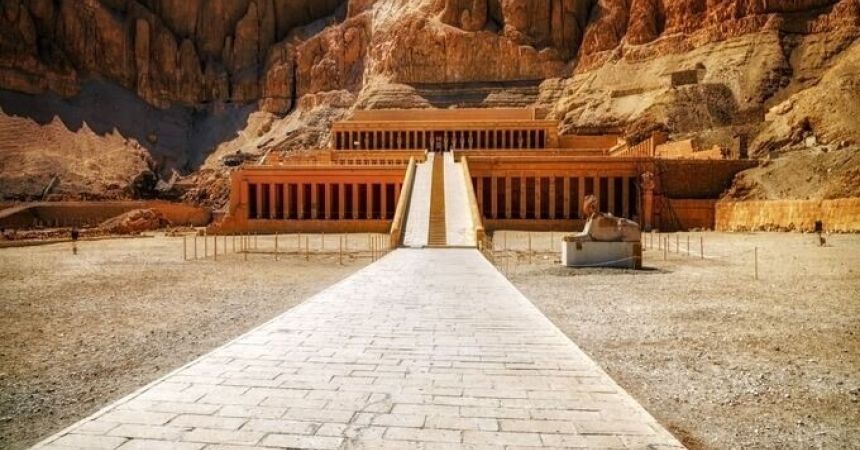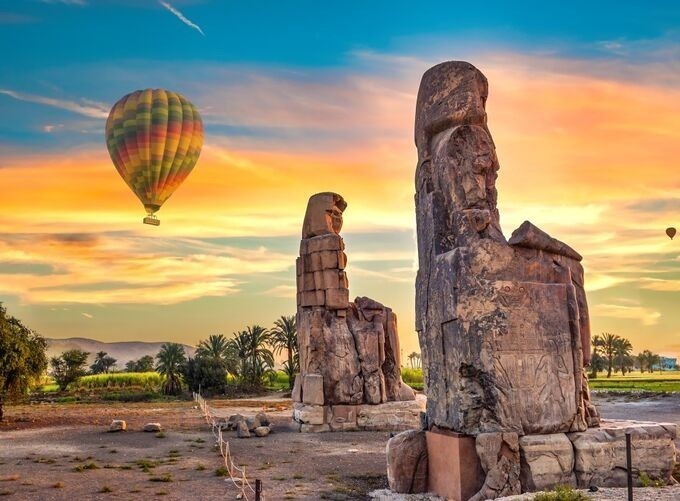
Luxor & the Kings Valley – Temples, Tombs & Treasures
Luxor, often hailed as the world’s greatest open-air museum, is a treasure trove of ancient Egyptian history and architecture. Nestled along the banks of the Nile River, this historic city is home to some of the most significant archaeological sites in Egypt. Among its many wonders, the Valley of the Kings stands out as a symbol of Egypt’s rich cultural and historical heritage. This comprehensive guide takes you on a deep dive into the ancient marvels of Luxor and the Valley of the Kings, exploring their history, significance, and what to expect when visiting these awe-inspiring sites.
Introduction to Luxor
1.1. Historical Significance
Luxor, formerly known as Thebes, was the capital of Egypt during the New Kingdom period (1550-1070 BCE). The city was the religious and political center of ancient Egypt and a hub for monumental construction projects. Today, Luxor is renowned for its well-preserved temples, tombs, and monuments that offer a glimpse into the grandeur of ancient Egyptian civilization.
1.2. Geography and Climate
Luxor is situated in Upper Egypt, approximately 670 kilometers south of Cairo. The city enjoys a hot desert climate with mild winters and extremely hot summers. The best time to visit Luxor is from October to April when temperatures are more manageable and conditions are ideal for exploring the outdoor sites.
Key Attractions in Luxor
2.1. Karnak Temple Complex
The Karnak Temple Complex, one of the largest religious complexes ever built, is a monumental tribute to the gods of ancient Egypt. It covers an area of about 100 hectares and features an array of temples, chapels, and pylons.
2.1.2. Notable Features
- Hypostyle Hall: This grand hall features 134 massive columns, each intricately decorated with hieroglyphics and reliefs.
- Obelisks: The complex is home to several impressive obelisks, including one erected by Hatshepsut.
- Sacred Lake: A large lake used for ritual purification, adding to the complex’s spiritual significance.
2.2. Luxor Temple
The Luxor Temple, located in the heart of modern Luxor, is a beautifully preserved temple dedicated to the Theban Triad: Amun, Mut, and Khonsu. It was originally built by Amenhotep III and later expanded by Ramses II.
2.2.2. Notable Features
- Colonnade of Ramses II: Featuring statues of Ramses II, this impressive colonnade is a major highlight.
- The Avenue of Sphinxes: This ancient pathway lined with sphinx statues connects Luxor Temple with Karnak Temple.
2.3. Temple of Hatshepsut
The Temple of Hatshepsut, also known as Deir el-Bahari, is a remarkable funerary temple dedicated to Queen Hatshepsut, one of Egypt’s few female pharaohs. The temple is built into the cliffs of Deir el-Bahari and is known for its stunning architecture and well-preserved reliefs.
2.3.2. Notable Features
- Terraced Structure: The temple’s three terraced levels create a striking visual effect against the desert backdrop.
- Colossal Statues: Statues of Hatshepsut adorn the temple’s exterior, reflecting her divine status and royal power.
2.4. Valley of the Queens
Located on the west bank of the Nile, the Valley of the Queens served as the burial place for the wives and children of pharaohs. Although less famous than the Valley of the Kings, it is home to several significant tombs.
2.4.2. Notable Features
- Tomb of Nefertari: Known for its exquisite paintings and decorations, this tomb is often considered one of the most beautiful in Egypt.
- Tomb of Prince Khaemwaset: The tomb features elaborate frescoes and offers insights into royal life during the New Kingdom.
The Valley of the Kings
3.1. Historical Context
The Valley of the Kings, located in the Theban Necropolis, is an ancient burial site that housed the tombs of many New Kingdom pharaohs. It served as the primary royal cemetery from the 16th to the 11th centuries BCE. The valley is renowned for its richly decorated tombs, which provide valuable information about ancient Egyptian beliefs, rituals, and daily life.

3.2. Tomb Exploration
3.2.1. Key Tombs
- Tomb of Tutankhamun (KV62): Discovered by Howard Carter in 1922, this tomb is famous for its intact treasures, including the iconic gold mask of Tutankhamun.
- Tomb of Ramses VI (KV9): Known for its elaborate decorations and well-preserved texts, this tomb provides significant insights into royal funerary practices.
- Tomb of Seti I (KV17): One of the largest and most beautifully decorated tombs, featuring intricate paintings and extensive hieroglyphic inscriptions.
3.2.2. Notable Features
- Wall Paintings: The tombs are adorned with vibrant and detailed paintings depicting scenes from the Book of the Dead, rituals, and the afterlife.
- Hieroglyphics: The walls are inscribed with texts that guide the deceased through the underworld and ensure their eternal life.
3.3. Visiting Tips
- Ticketing: Entrance to the Valley of the Kings requires a ticket, which can be purchased at the site or in advance. There are also additional fees for visiting specific tombs.
- Guided Tours: Hiring a knowledgeable guide can enhance your experience by providing historical context and detailed information about the tombs.
- Dress Code: Wear comfortable clothing and sturdy shoes, as exploring the tombs involves walking and navigating uneven terrain.
Cultural Insights
4.1. Ancient Egyptian Beliefs
Ancient Egyptians believed in an elaborate afterlife, where the deceased would live eternally if they were properly buried and equipped with the necessary items for their journey. The elaborate tombs and artifacts found in Luxor and the Valley of the Kings reflect these beliefs and provide insights into the religious practices of the time.
4.2. Architectural Achievements
The temples and tombs of Luxor showcase the architectural prowess of ancient Egyptian builders. The use of massive stone structures, intricate carvings, and sophisticated engineering techniques highlight the importance of religious and funerary practices in Egyptian society.
Practical Information for Visitors
5.1. Getting There
- Flights: Luxor International Airport is well-connected to major cities in Egypt and international destinations. Direct flights are available from Cairo, Alexandria, and other regional hubs.
- Transportation: Within Luxor, taxis and car hire services are available for traveling between sites. Many visitors opt for Luxor guided tours that include transportation.
5.2. Accommodation in Luxor
Luxor offers a range of accommodation options, from budget hotels to luxurious resorts. Many hotels are located along the Nile River, providing scenic views and easy access to major attractions.
5.3. Local Cuisine in Luxor
Exploring Luxor also means indulging in local cuisine. Enjoy traditional Egyptian dishes such as koshari, falafel, and freshly baked bread at local eateries and restaurants.
5.4. Safety and Etiquette in Luxor
- Safety: Luxor is generally safe for tourists. However, it’s essential to stay aware of your surroundings, especially in crowded areas.
- Etiquette: Respect local customs and traditions. Dress modestly when visiting religious and cultural sites.
From Pyramids to Nile: Egypt Holiday Guide
Luxor and the Valley of the Kings offer a profound journey into the heart of ancient Egyptian civilization. From the grandeur of the Karnak Temple Complex to the intricate beauty of the visit Valley of the Kings’ tombs, these sites provide an unparalleled glimpse into the past. Whether you are a history enthusiast, an archaeology aficionado, or simply a curious traveler, Luxor’s ancient marvels promise an unforgettable experience steeped in history, culture, and wonder.



